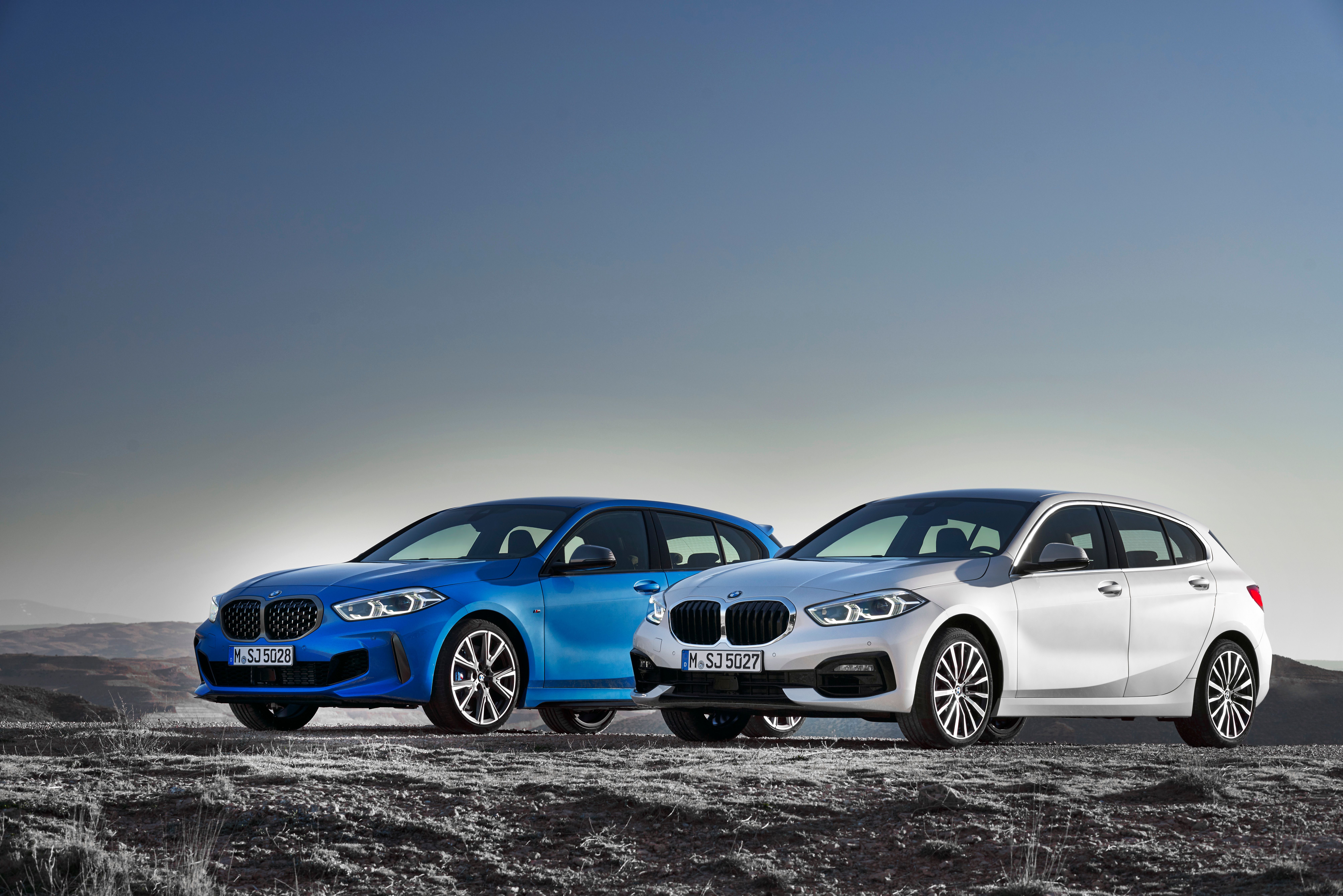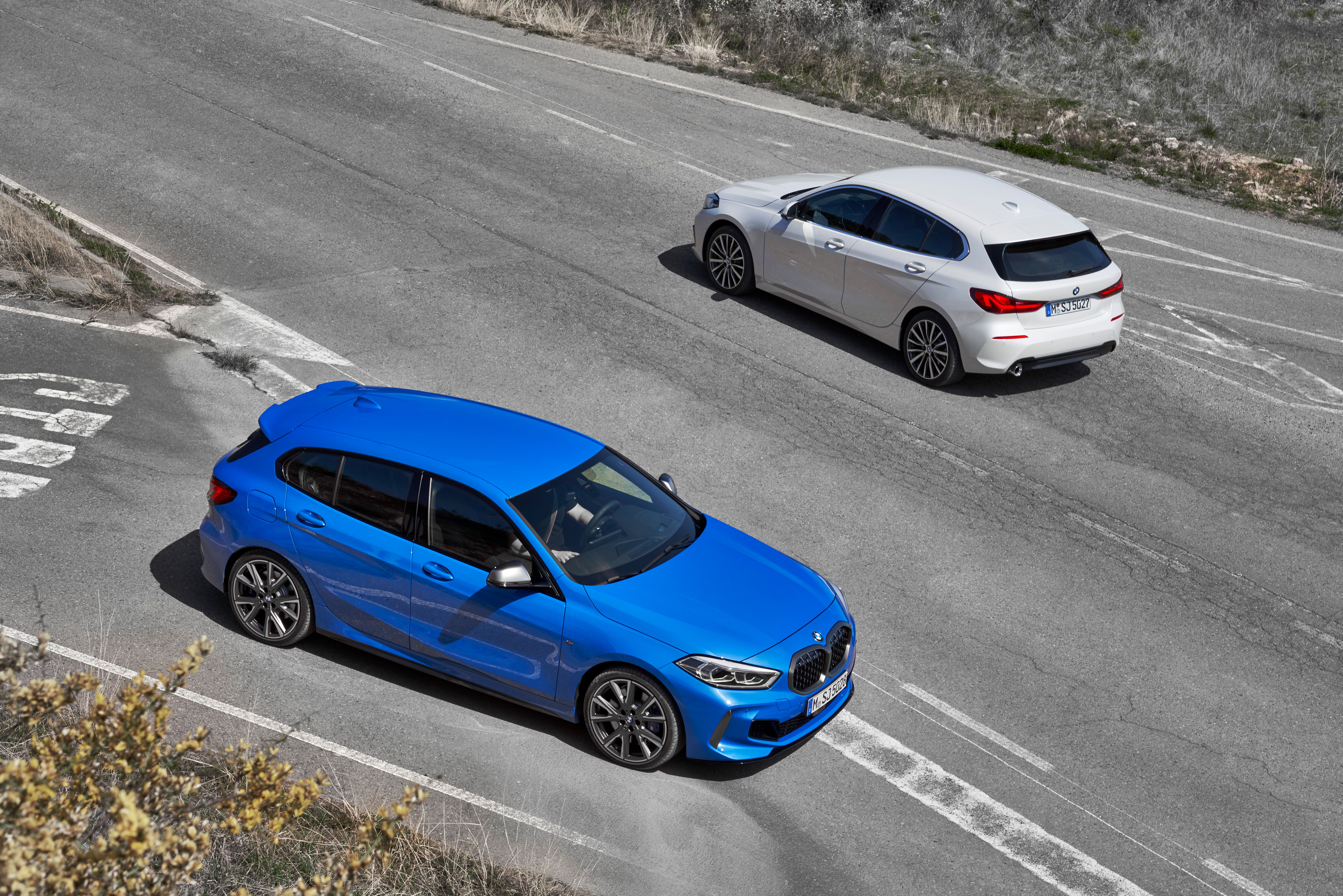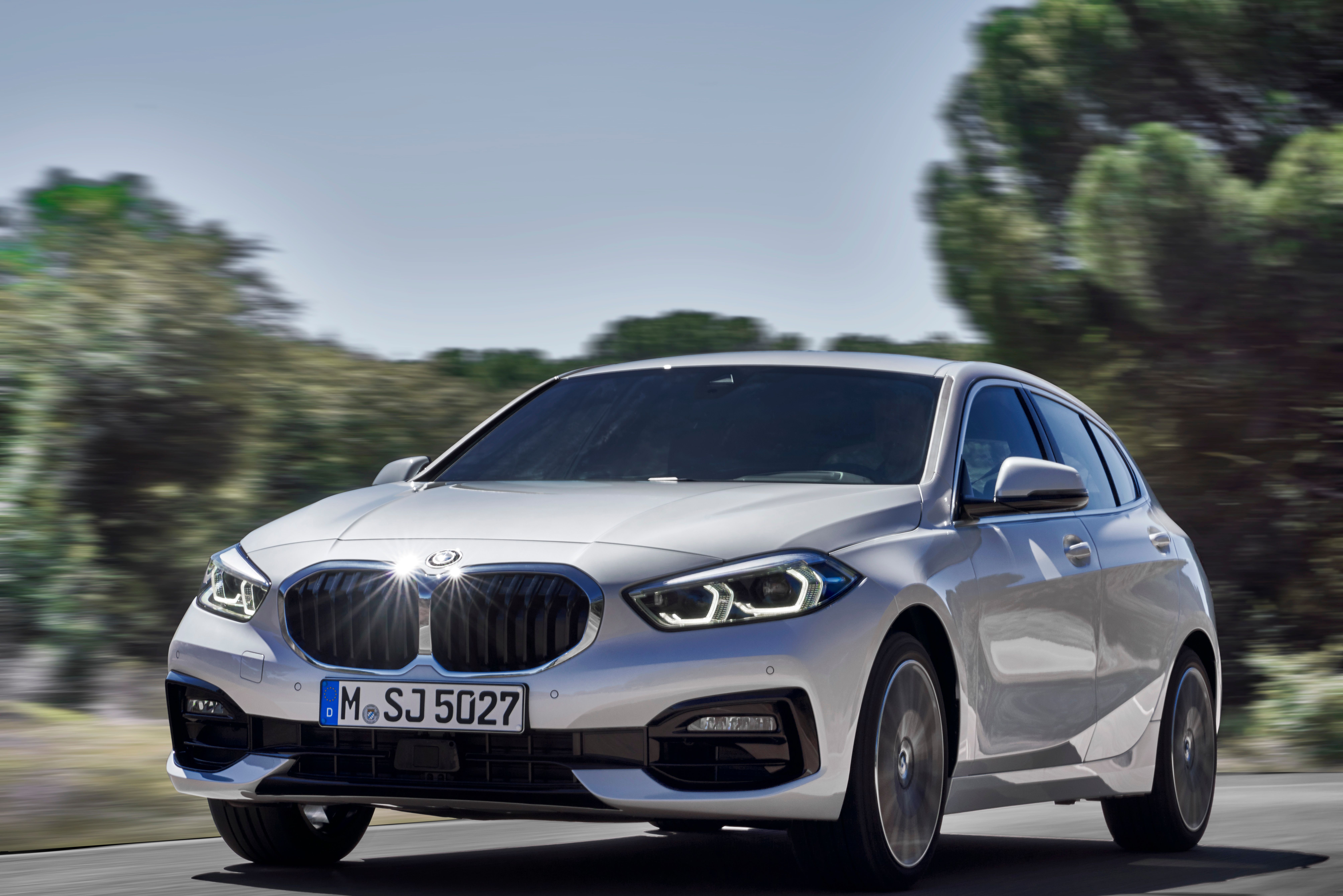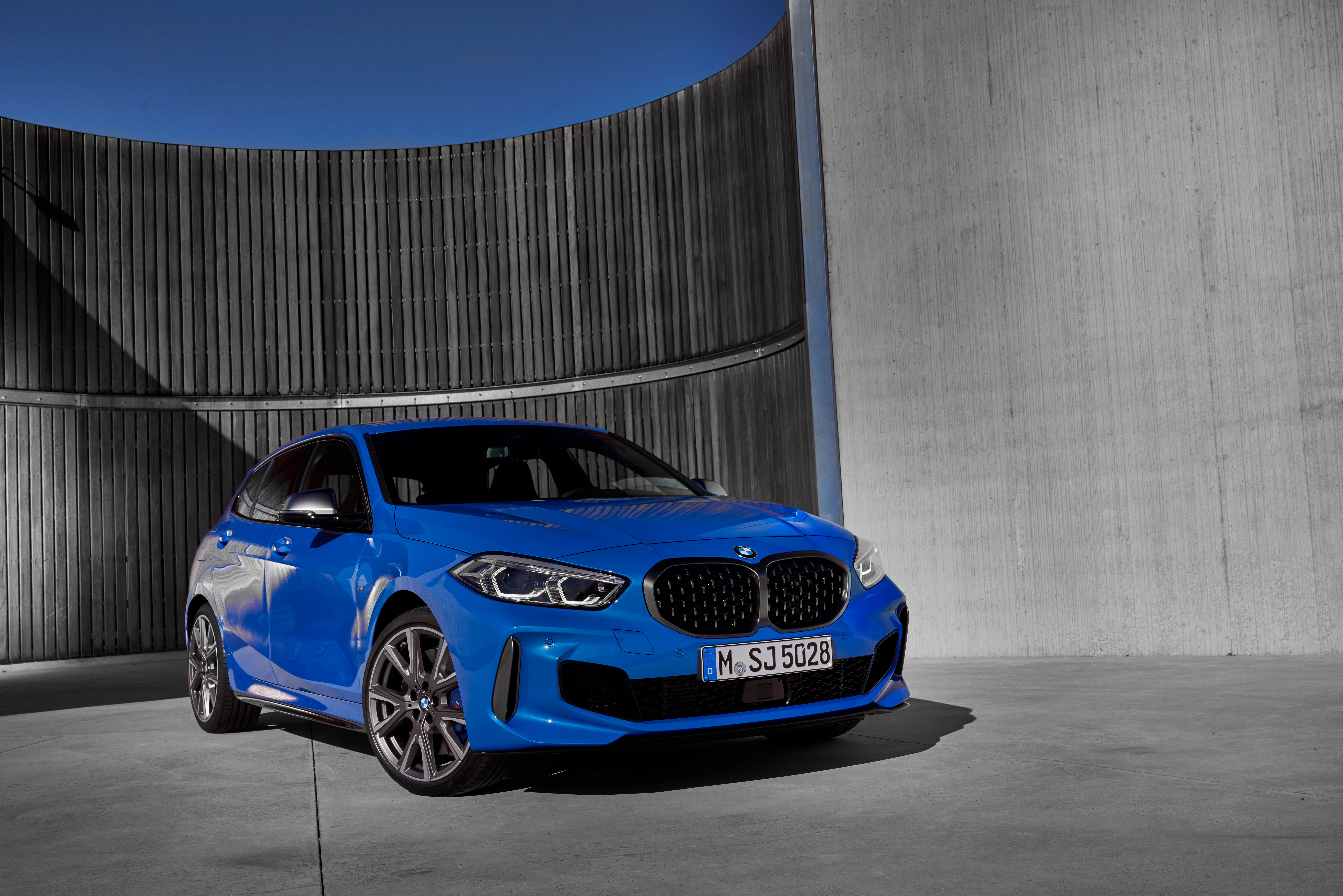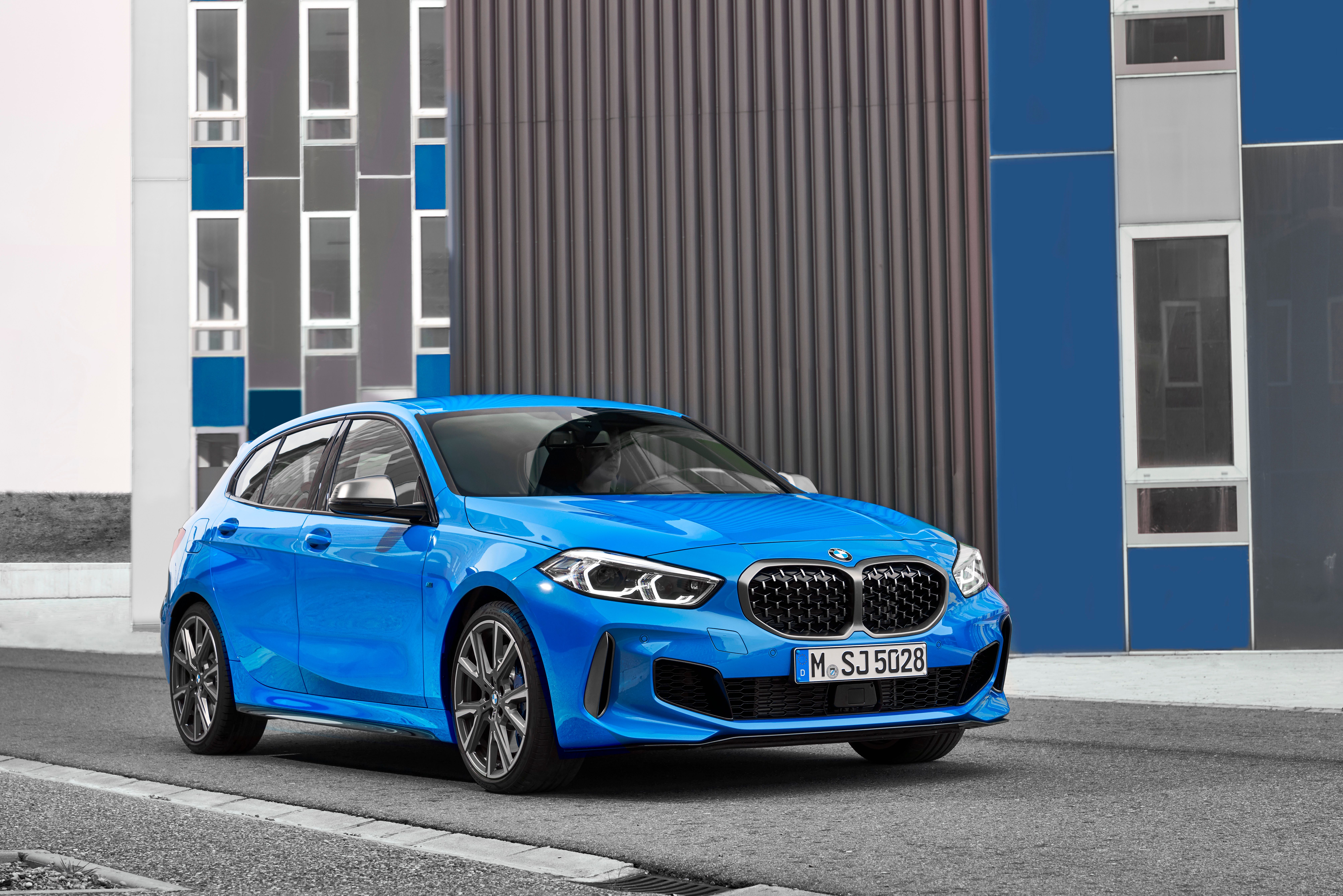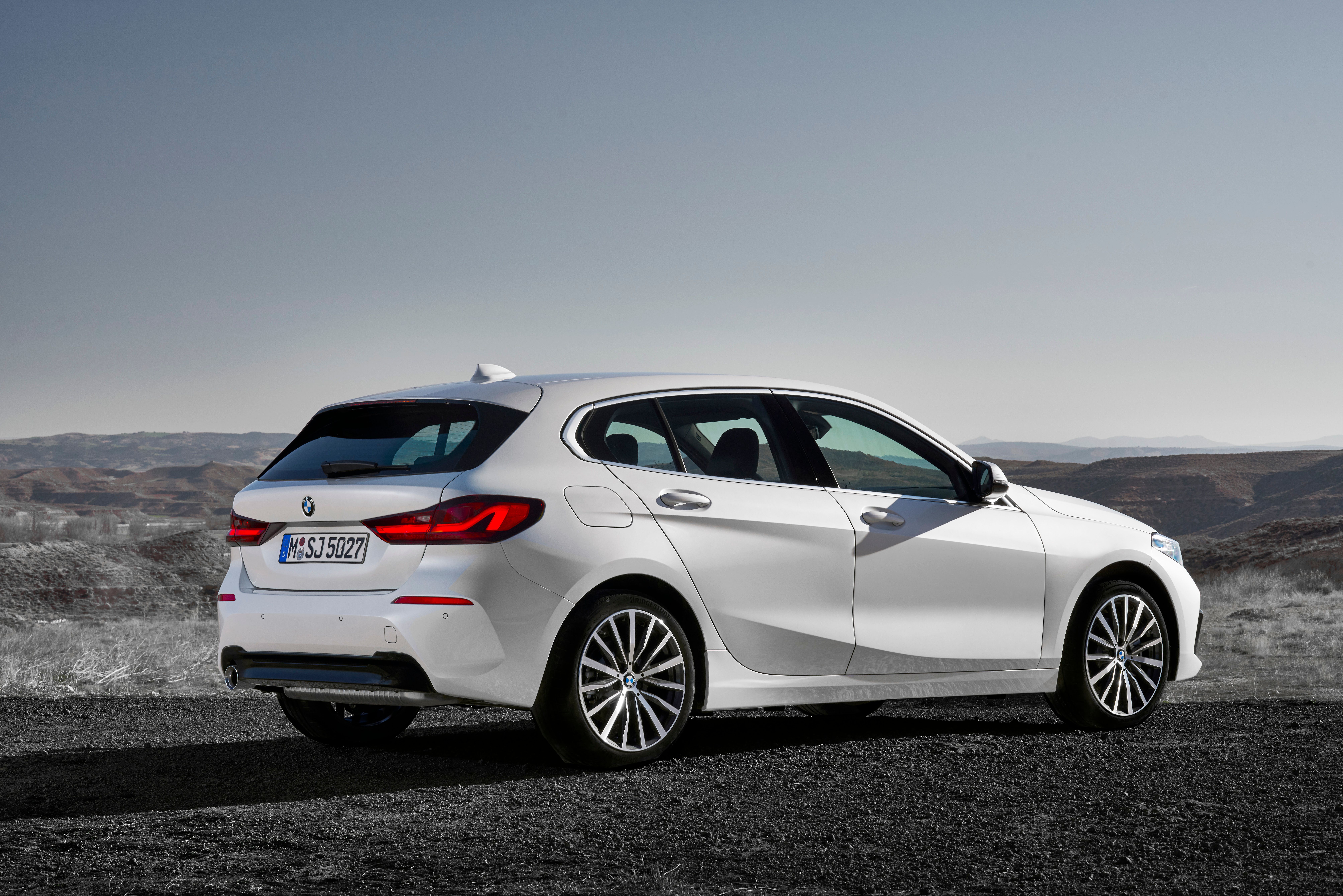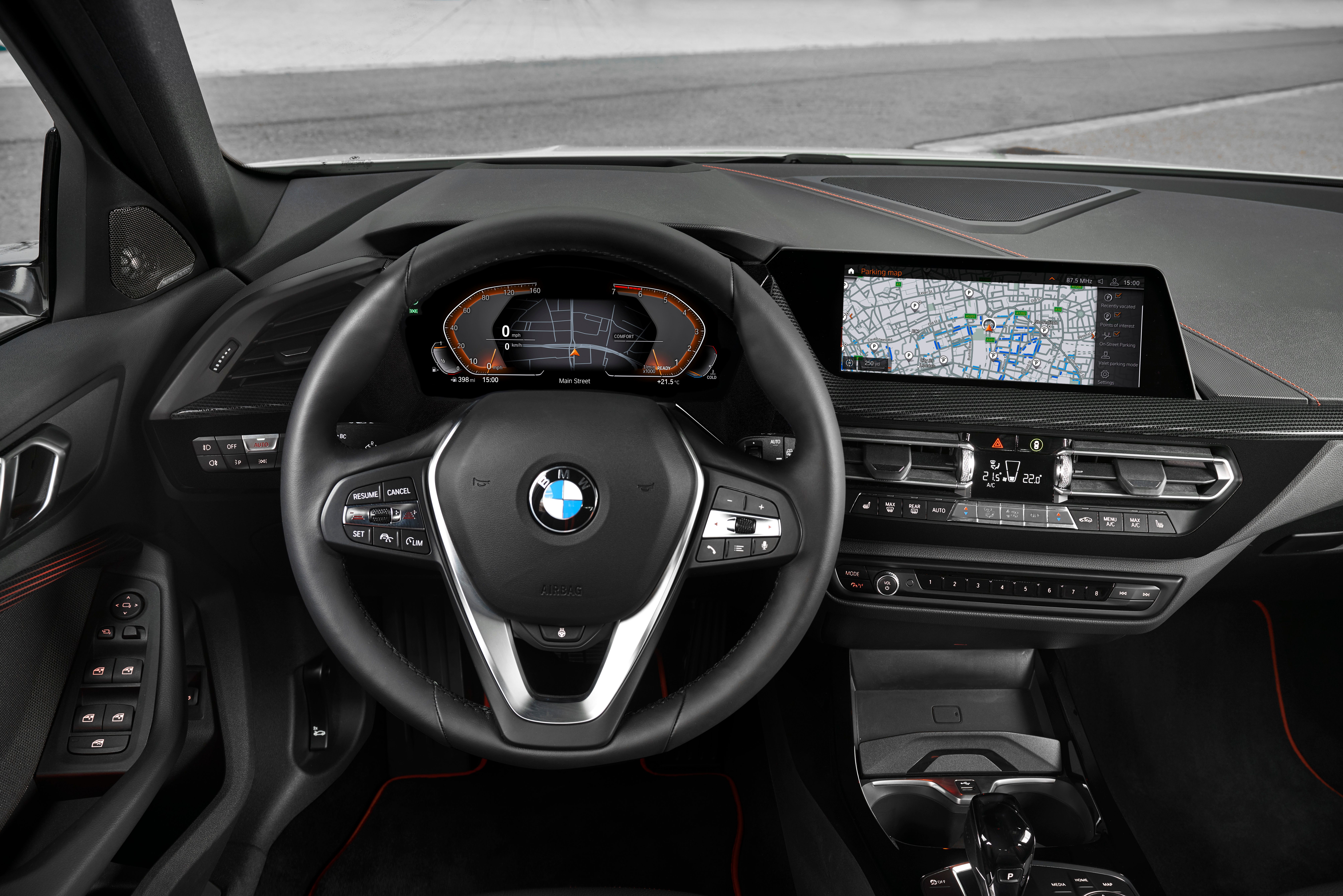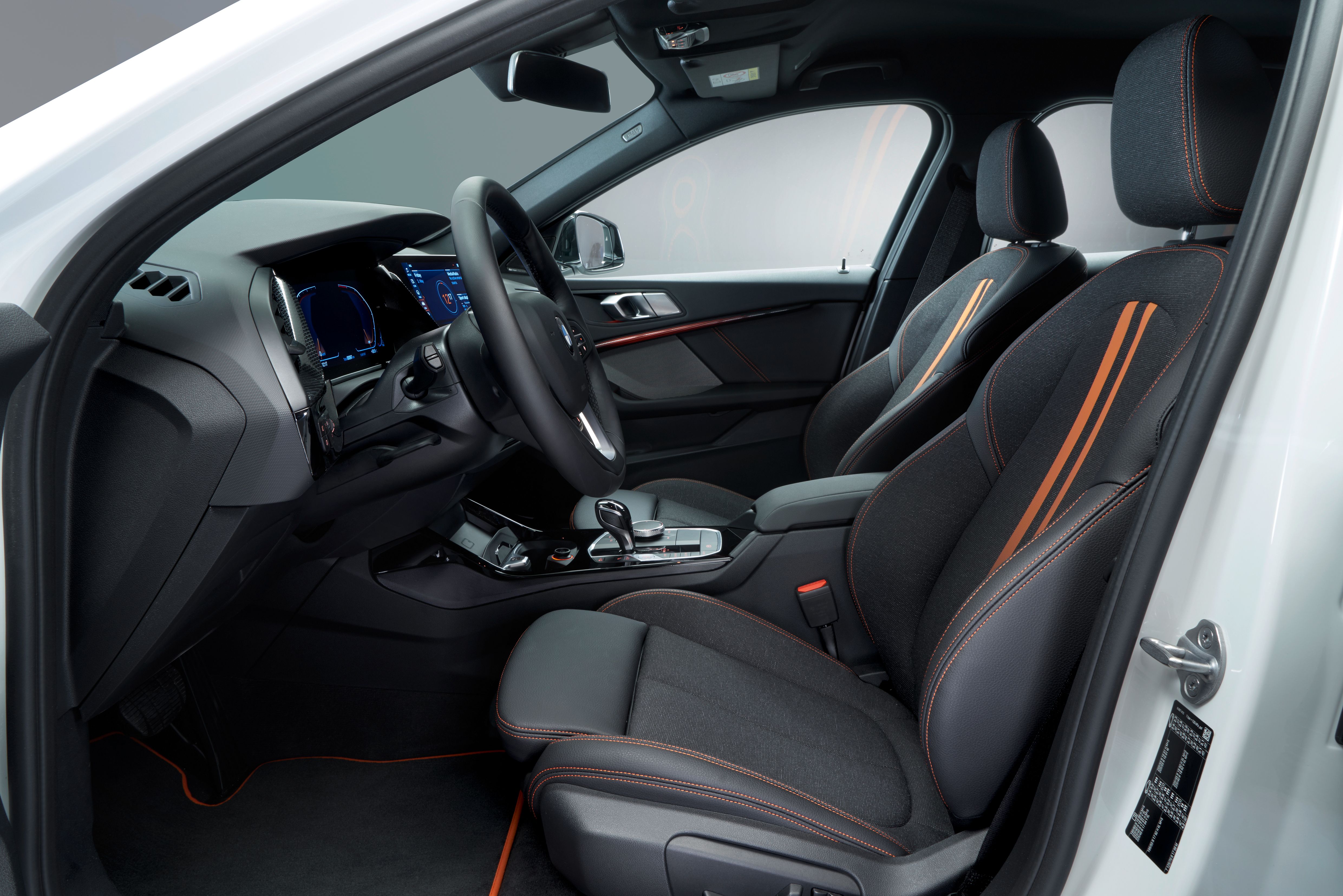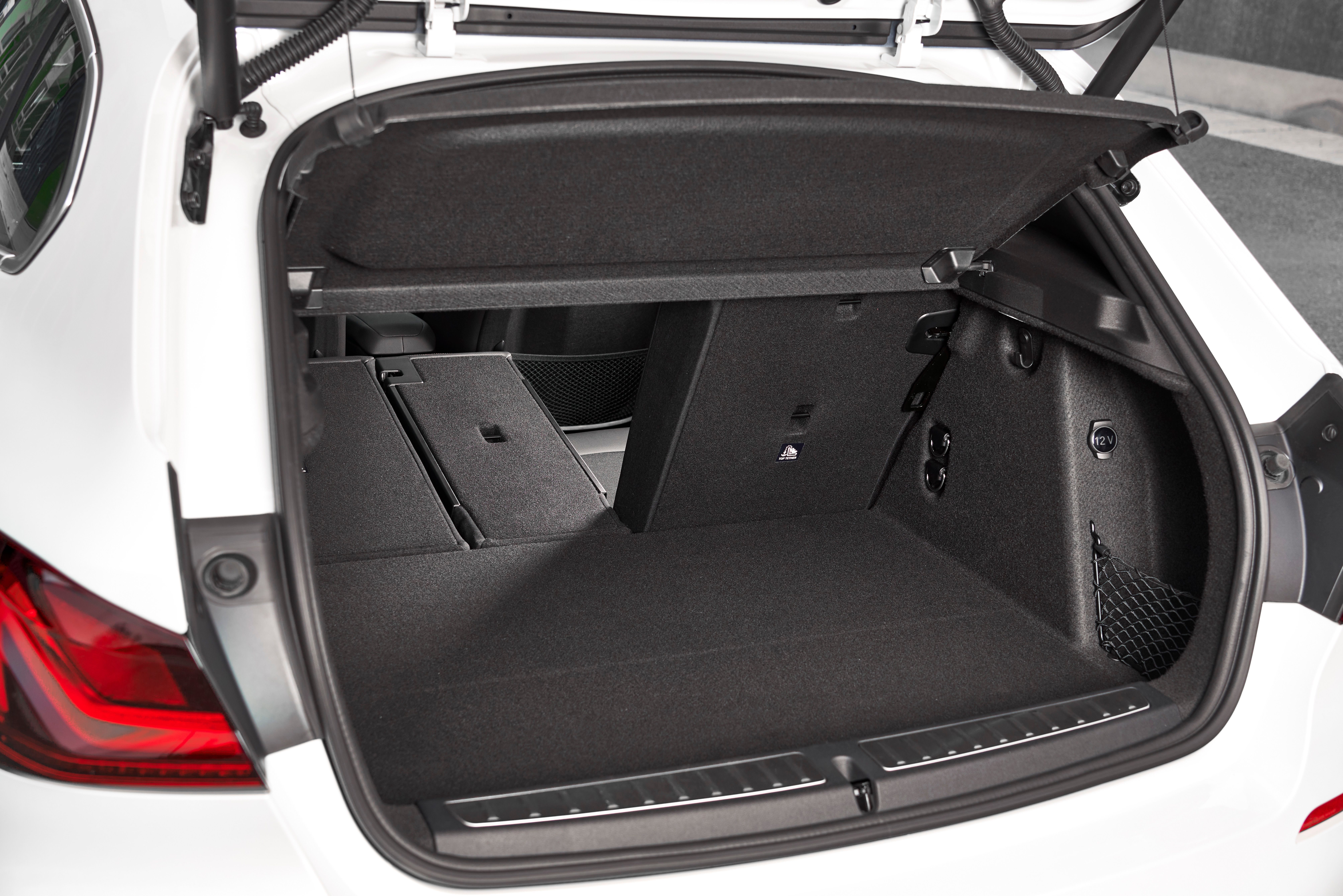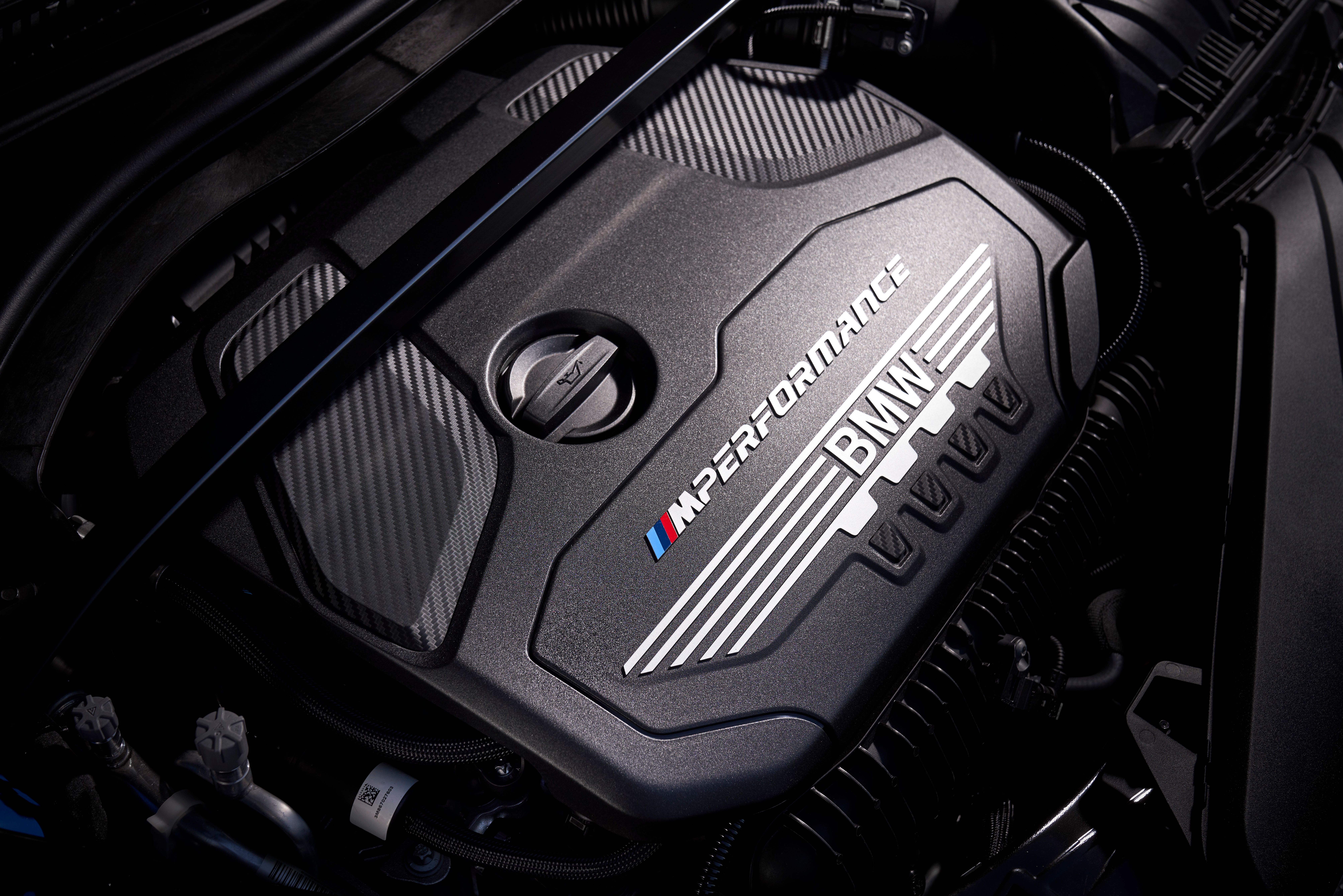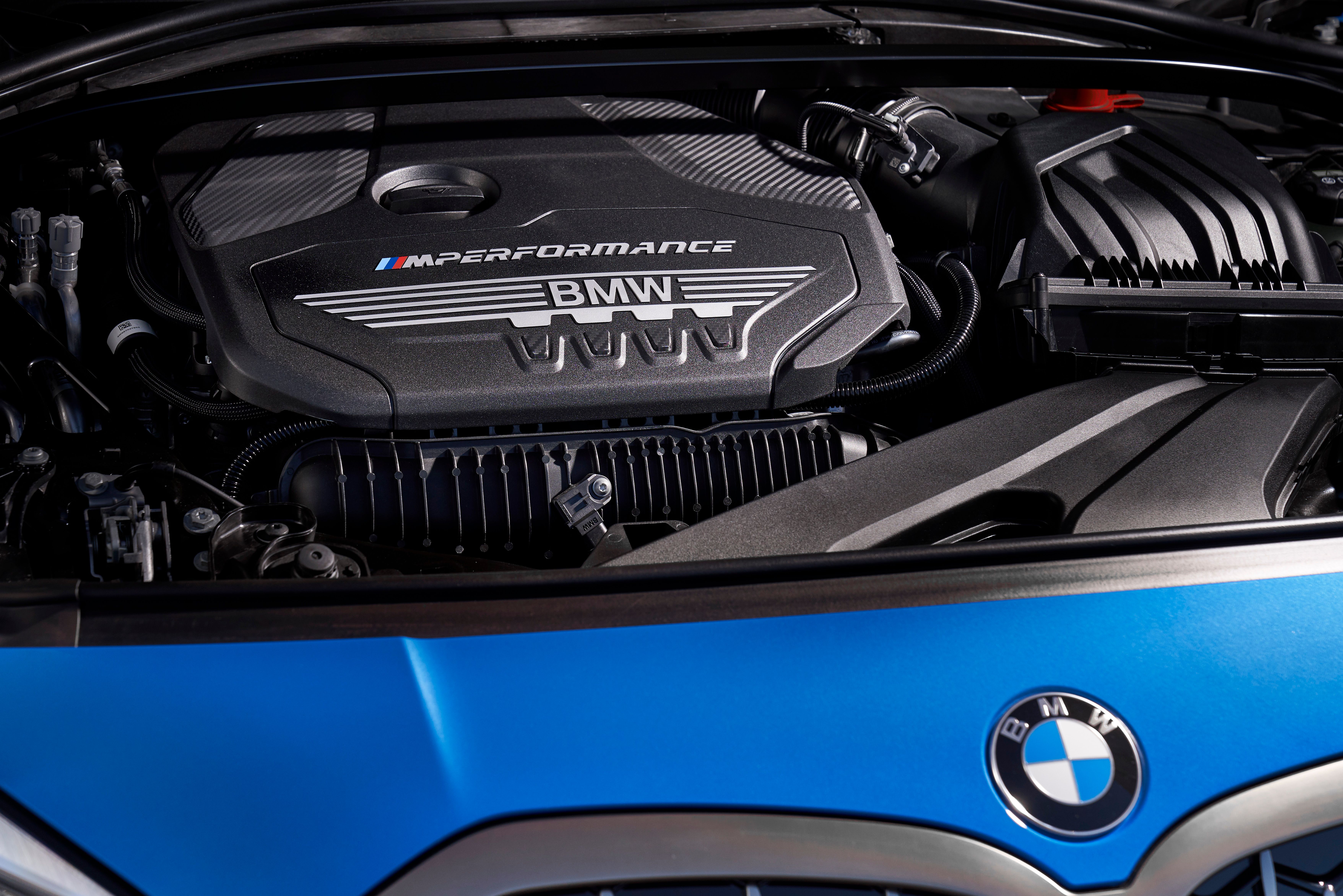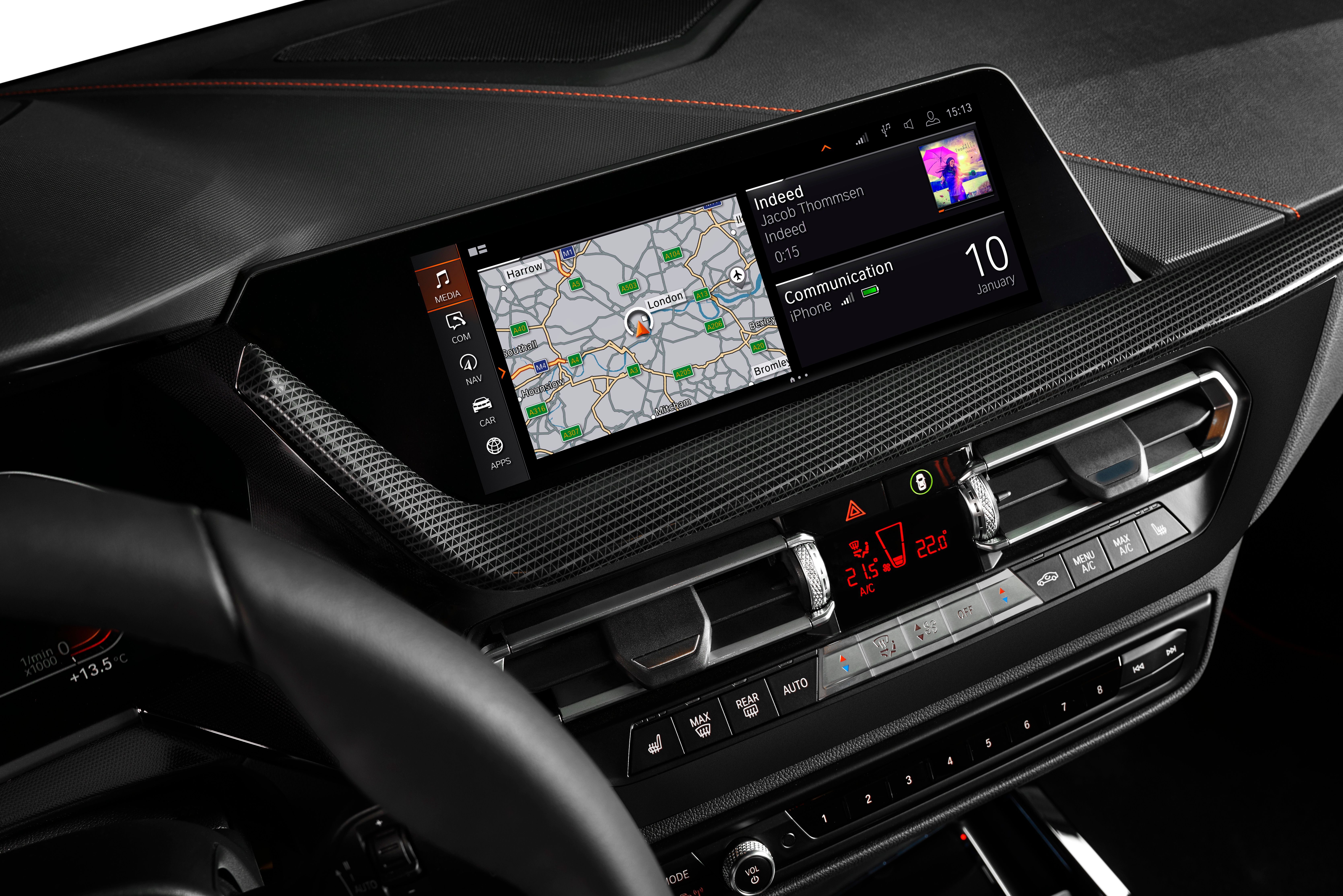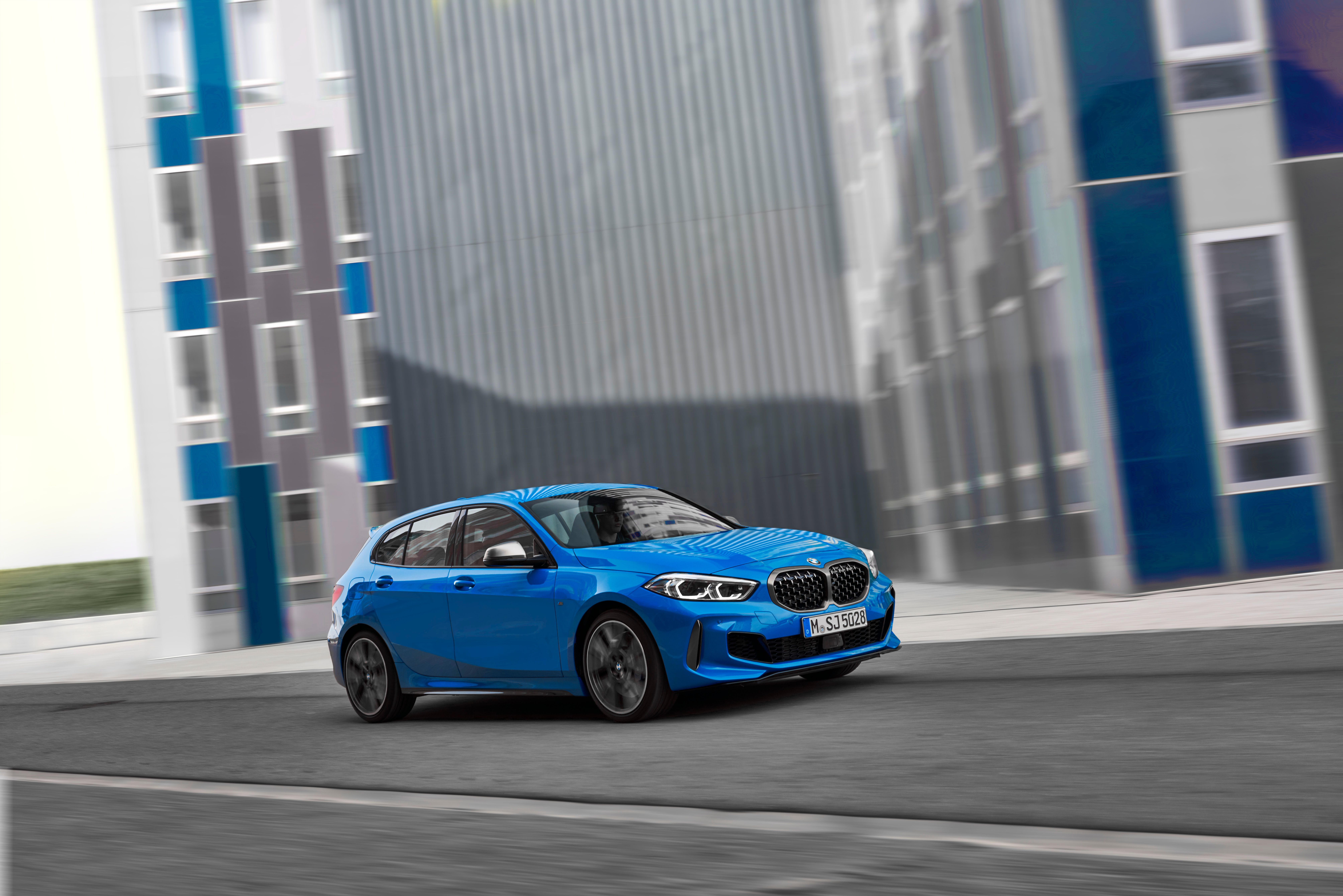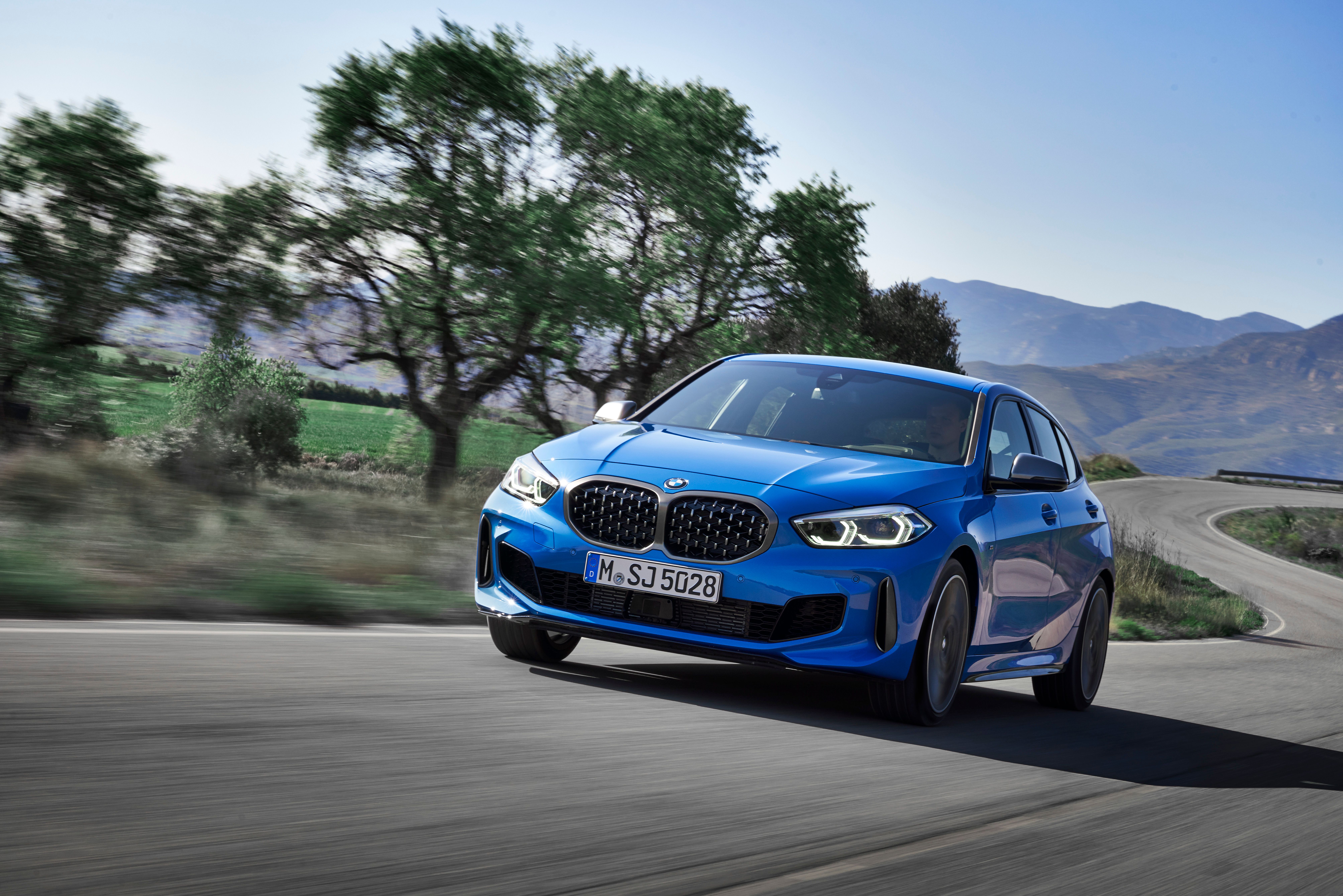BMW purists, have your rotten tomatoes ready because the all-new 1 Series has just been revealed and, as we were expecting, most models in the 1 Series lineup will be front-wheel drive. Yes, the Bavarian automaker has abandoned the traditional rear-wheel drive formula with a longitudinal engine in favor of a cheaper, easier to manufacture, and more compact transverse engine with power going either to the front wheels or all four, depending on the model.
Its internal code name is F40, and the model it replaces was called the F20. The cars themselves aren’t only different from a drivetrain layout standpoint, but also design, as the new F40 really embraces the proportions of a front-wheel drive car, with a short snout, steeply rising belt line, and slightly smaller exterior dimensions overall. In fact, if you put it alongside the new BMW X2 crossover, the 1-Series will just look like a slightly lower and sleeker version of that, but I doubt non-car people will easily be able to tell them apart.
Why is the New, 2020 BMW 1 Series front-wheel drive?
Well, BMW is reacting to what its competitors are doing. Mercedes, for instance, has slowly been upping its A-Class game over the years. The previous generation A-Class (sold between 2012 and 2018) was a revolution compared to the tall, awkward-looking, people carrier that was the first- and second-generation model, adopting a more rakish and aggressive design (and a sportier driving experience) in order to start appealing to youths. BMW was caught off guard and couldn’t counteract with a model of its own... until now.
And, it’s not just Mercedes that got a head start on BMW, but also Lexus with its CT200h, Infiniti with the Q30 hatchback, and Audi was already making desirable front-wheel-drive cars in this size bracket way before its German rivals. So this is purely a business decision on BMW’s side; one made simply to counteract what its competitors are doing and to adapt to a market segment it’s never really been present in.
Should we be Sad that the 2020 BMW 1 Series is FWD?
Most definitely. Not only that, but it was also the only model in this segment that was available with a six-cylinder engine. And, what a six-cylinder engine it is. It's the same 3.0-liter, turbocharged, B58 that also powers the Toyota Supra. You could also have it with a manual gearbox and plenty of performance-enhancing options that no other rival manufacturer offered.
The automaker will pack it with trinket options and still get away with selling it - the new F40 1-Series will undeniably sell well in Europe, but in making it, BMW has inadvertently alienated die-hard fans and enthusiasts by making the exact same style of car that everybody else is making in the segment.
2020 BMW 1 Series Exterior Design
|
ids=841499,841500 |
no_overlay=false |
before_label=2020 BMW 1 Series |
after_label=2019 BMW 1 Series> |
BMW has clearly aligned the new F40 1-Series’ styling to that of the X1 crossover; a vehicle seems to look quite similar to in the official press photos. Its grille is taller than on all other larger non-SUV models in its range, and its headlights feature quite an aggressive slant to them. As is the case with some new BMWs (excluding the new G20 3-Series that we recently tested) its grille looks quite oversized for its fascia, at least in the photos, but in person, it may seem like it’s of a more suitable size.
|
ids=841501,841502 |
no_overlay=false |
before_label=2020 BMW 1 Series |
after_label=2019 BMW 1 Series> |
It looks like a front-wheel-drive car now, and I’d say cars like the new Mazda3 hatchback actually look more like they have the proportions of a rear-wheel drive vehicle than this. The car also looks quite tall from the side, again bringing the taller X2 to mind. It’s by no means an unpleasant look - quite the contrary (it’s well proportioned and very sporty looking for what it is), but keen eyes will immediately realize that this car sends most or all its power to the front wheels.
|
ids=841503,841504 |
no_overlay=false |
before_label=2020 BMW 1 Series |
after_label=2019 BMW 1 Series> |
The rear has broad light clusters that feature a similar blade design to what we saw on the G20 2020 BMW 3-Series. However, here the blade is integrated within the light itself and doesn’t protrude outward as dramatically as it does on its bigger brother. The sporty M135i has two exhausts sticking out, while the regular model only comes with one and looks far less aggressive.
In fact, it’s the M135i that looks better and more desirable with its sporty front and rear bumpers and bigger rims. It will be the poster version that BMW will advertise on all billboards because it does look quite snazzy finished in blue (a shade most likely called Monte Carlo Blau metallic).
Is it all bad, though?
Of course not, since this car is based on the same chassis architecture as the MINI lineup and those are some of the best driving front-wheel-drive cars you can buy right now. It will definitely be an enjoyable driving experience, but it won’t be one you’d have associated with something bearing the blue and white propeller badge on its nose.
The car is 5 millimeters shorter overall compared to the outgoing model, measuring 4,319 millimeters (170 inches) in total, but at 1,799 millimeters (70.8 inches) wide it is 34 millimeters wider and 13 millimeters taller too, so it now stands 1,434 mm (56.5 inches) tall. It rides on a 20 millimeter shorter wheelbase of 2,670 millimeters (105.1 inches), and all of this reshuffling of dimensions comes courtesy of the new drivetrain layout.
2020 BMW 1 Series Size Comparison (in mm)
|
2020 BMW 1 Series |
2019 BMW 1 Series |
Difference |
Length |
4319 |
4324 |
-5 |
|
|---|---|---|---|---|---|---|---|
|
Width |
1799 |
1765 |
34 |
||||
|
Height |
1434 |
1421 |
-13 |
||||
|
Wheelbase |
2670 |
2690 |
-20 |
2020 BMW 1 Series Interior Design
The new F40 1-Series is unquestionably a BMW inside in terms of design. It follows the same design as the new X5 or the new 3-Series, complete with an optional, fully-digital BMW Live Cockpit Professional gauge cluster, the latest version of iDrive, and exactly the same buttons and controls (plus optional gesture control). If it’s anything like the G20 3-Series, then there’s hardly anything to complain about.
But BMW wants you to look up at its new sliding glass panoramic sunroof, a feature that it never offered on a 1-Series until now. Also new are backlit trim strips that have never been available on a BMW model but have been available as an option on MINI models for a few years. The automaker says, “they come in three different designs with six switchable colors and create compelling translucent effects.”
The sporty M135i comes with unique interior touches, the biggest of which are the awesome looking suede-trimmed sports seats with headrests integrated into the backrest. These seats make such a big difference to the ambiance and really set a sporty mood inside. The sporty model also comes with the dark headliner to complete said mood.
The automaker calls this “a giant leap in space” and with 33 extra millimeters (1.3 inches) more legroom and 19 millimeters (0.75 inches) extra headroom, rear occupants should be more comfortable overall. The extra width has a positive effect on elbow room - in the front, it has been upped by 42 millimeters (1.65 inches), while in the rear it has been increased by 13 millimeters (0.5 inches). Cargo capacity is rated at 380 liters, which is 20 liters more than before and BMW also mentions the minimum width of the trunk has been increased by 67 millimeters (2.63 inches); fold the rear bench and maximum load volume increases to an impressive 1,200 liters.
What Powers the New, F40 2020 BMW 1-Series?
Under the new 1 Series’ hood, BMW will provide several gasoline and diesel options for Europe. So far it’s only announced two gasoline burning variants, the 118i and the 135i xDrive and three diesel variants, the 116d, 118d, and 120d xDrive. They range in output from 116 PS (114 horsepower) to 306 PS (302 horsepower) and, depending on which one you opt for, one of three transmission options will be available.
2020 BMW 1 Series - gasoline lineup
|
Engine |
In-line/3/4 |
In-line/4/4 |
|---|---|---|
|
Effective capacity cc |
1499 |
1998 |
|
Stroke/bore mm |
94.6/82.0 |
94.6/82.0 |
|
Compression ratio :1 |
11.0 |
9.5 |
|
Horsepower |
140 HP @ 4,200-6,500 RPM |
306 HP @ 4,500–6,250 RPM |
|
Torque |
162 LB-FT @ 1,480–4,600 RPM |
331 LB-FT @ 1,750–5,000 RPM |
|
0 to 100 km/h (62 mph) |
8.5 seconds |
4.8 seconds |
|
Top Speed |
213 km/h (132 mph) |
250 km/h (155 mph) |
If you want an automatic for either the 116 or the 118i, you will be able to opt for a seven-speed dual clutch unit, while in the case of the 118d, the gearbox is an eight-speed torque converter automatic. This transmission is standard on the all-wheel-drive-only 120d xDrive. The top-performing M135i has the eight-speed Steptronic Sport transmission which the manufacturer says “further improved smoothness and acoustic properties.”
Regarding the intelligent xDrive all-wheel-drive system, BMW doesn’t specifically mention this in the press release, but it can’t differ too much from what it already offers on its front-wheel-drive cars turned all-wheel drive. The system will send most of the power to the front wheels most of the time, and it’s only when the fronts will start to lose grip that some power will also be shuffled to the rear wheels to improve grip and traction.
Does the 2020 BMW 1 Series Come With a Lot of New Tech?
It also comes with an available full-color 9.2-inch head-up display, adaptive full-LED headlights and a whole slew of active and passive safety aids. BMW Intelligent Personal Assistant is also an option, and it essentially allows the driver to speak to the car by saying the now-familiar phrase, “Hey BMW!”. Connected Navigation is another option and factors in live information it obtains via a permanent internet connection - it can re-route depending on traffic situations and even propose places to park for your specified destination.
How Does the 2020 BMW M135i Compare to the 2020 Mercedes-AMG A35?
BMW is clearly eyeing the Mercedes-AMG A35 with the M135i model as both offer the same basic formula and very similar specs and similar all-wheel-drive systems. The M135i runs a 2.0-liter four-cylinder twin-turbocharged engine with 302 horsepower between 5,000 and 6,250 rpm and a peak torque of 450 Nm (332 pound-feet) delivered flat between 1,750 and 4,500 rpm - it's the most powerful BMW four-cylinder engine ever made. The automaker claims it can sprint to 100 km/h (62 mph) in 4.7 seconds, with the optional M Performance package fitted, and that it will keep accelerating all the way to an electronically limited 250 km/h (155 mph).
The M135i’s sports automatic transmission has a launch control function, as well as tower struts to stiffen the body and extra reinforcement along the transmission tunnel area, along with the standard Sport suspension and sharp M Sport steering rack. In terms of efficiency, BMW claims this sportiest version of the 1-Series returns between 6.8 l/100km (34.6 U.S. mpg) when equipped with the smaller 18-inch rims (it can be optionally fitted with larger 19-inch rims, the ones you can see on the blue car in the official photos).
Over in camp Mercedes-AMG, the A35 wades into battle with a similar 2.0-liter engine boosted by a single turbocharger to produce exactly the same 302 horsepower, but less torque, 400 Nm (295 pound-feet) which peaks at 3,000 rpm and is not delivered over a wider rpm range as is the case with the engine in the M135i. Its gearbox is a seven-speed dual clutch, and just like the M135i, it sends power mainly to the front wheels, occasionally sending oomph to the rear when the car starts sliding, understeering, or just on corner exit when the road is slippery. Even with less torque than the BMW, Mercedes still claims the AMG A35 completes the benchmark sprint in 4.7 seconds and has an identical limited top speed of 250 km/h (155 mph). Average claimed efficiency is rated at 7.3 l/100km (32.22 U.S. mpg).
|
Engine |
2.0-liter four-cylinder twin-turbocharged |
2.0-liter turbocharged |
|---|---|---|
|
Horsepower |
302 HP @ 5,000-6,250 RPM |
302 HP |
|
Torque |
332 LB-FT @ 1,750-4,500 RPM |
295 LB-FT |
|
0 to 62 mph |
4.7 seconds |
4.7 seconds |
|
Top Speed |
155 mph |
155 mph |
It is worth noting that neither of these cars will be as fun to drive as the now-defunct Ford Focus RS, a car that was based on a front-wheel-drive chassis, but one whose all-wheel-drive system was actually rear-biased most of the time, so the handling was more akin to that of a rear-wheel drive car. Not so with either of these two and we expect them to feel like very grippy front-wheel-drive cars, even when driven fast. Their rear ends might step out a little bit if you mash the throttle on corner exit, but they are mainly designed to grip - power sliding won’t be on any of their menus.
Can't wait to see the 2020 BMW 1-Series? Check out this detailed walkaround preview video
Further reading
Read our full review on the 2020 BMW 1 Series.
Read our full review on the 2019 BMW 1 Series.

